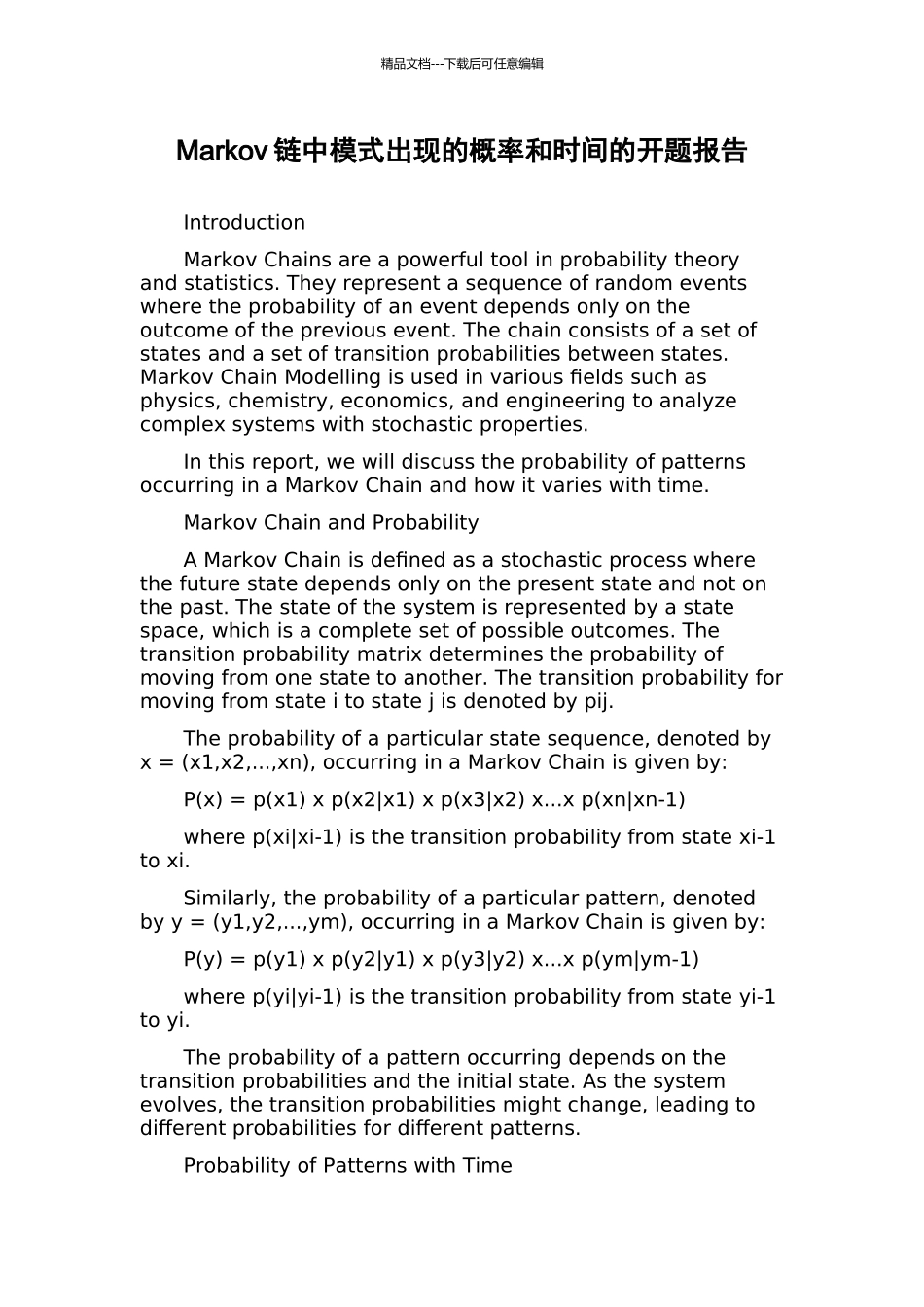精品文档---下载后可任意编辑Markov 链中模式出现的概率和时间的开题报告IntroductionMarkov Chains are a powerful tool in probability theory and statistics. They represent a sequence of random events where the probability of an event depends only on the outcome of the previous event. The chain consists of a set of states and a set of transition probabilities between states. Markov Chain Modelling is used in various fields such as physics, chemistry, economics, and engineering to analyze complex systems with stochastic properties.In this report, we will discuss the probability of patterns occurring in a Markov Chain and how it varies with time.Markov Chain and ProbabilityA Markov Chain is defined as a stochastic process where the future state depends only on the present state and not on the past. The state of the system is represented by a state space, which is a complete set of possible outcomes. The transition probability matrix determines the probability of moving from one state to another. The transition probability for moving from state i to state j is denoted by pij.The probability of a particular state sequence, denoted by x = (x1,x2,...,xn), occurring in a Markov Chain is given by:P(x) = p(x1) x p(x2|x1) x p(x3|x2) x...x p(xn|xn-1)where p(xi|xi-1) is the transition probability from state xi-1 to xi.Similarly, the probability of a particular pattern, denoted by y = (y1,y2,...,ym), occurring in a Markov Chain is given by:P(y) = p(y1) x p(y2|y1) x p(y3|y2) x...x p(ym|ym-1)where p(yi|yi-1) is the transition probability from state yi-1 to yi.The probability of a pattern occurring depends on the transition probabilities and the initial state. As the system evolves, the transition probabilities might change, l...

